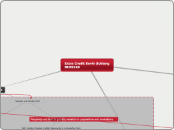Extra Credit Kevin Schlang BIO311D
Exam 1 Topics
Population Genetics
Genetic Variations in Populations
Allele Frequency= Gene Frequency= gametic frequency
Def: The proportion of a certain allele within a population
Gene Pool: The set of all alleles at all Loci of a population
MN blood type example
Frequencies of Alleles for blood types similar in populations closer to each other
New Guinea and Australia are similar, but Guatamala almost opposite
Example used to explain % Frequence
N/total X 100
The Hardy-Weinberg genetic equilibrium
The allele and genotypic frequencies remain the same from generation to generation in a population in which there is
Factors in order for Hardy-Weinberg equilibrium to exist
Infinite large population size
Random mating
No Selection
No mutations
No migration
Equation
p^2+2pq+q^2=1
P^2=Frequency of Homozygous Dominant Species
q^2= frequency of homozygous recessive allele
2pq=frequency of heterozygous genetype
Mutation and Genetic Drift
Mutation
Def: Random changes in the genetic code
Facts
mutation rates for many genes vary between one out of ten to one hundred thousand
mutation is the ultimate source of genetic variation in populations.
the majority of mutations are detrimental in a given environment
Genetic Drift
Def: random changes in allele frequencies in a population from generation to generation.
genetic drift results from sampling error in a population with limitied size.
Effects from Genetic Drift
Founder Effect
random changes in allele frequencies in a population during colonization.
founder effect occurs within the same generation.
Bottleneck effect
random changes in allele frequencies in a population due to dramatic reduction of population size.
Reduction in size is caused either by some catastrophic events (density- independent factors) or only the frequencies of those loci are conside
Exam 2 Topics
Speciation
2 Types
Allopatric
Def: species formation from a common ancestor in geograpghically separate locations
2 Models of Allopatric Speciation
Dumb-Bell Model
Ancestrol species divides into two almost equal halves each of which forms a new species.
Peripheral Isolate Model
New Species forms from population isolated at edge of ancestrol species range
Sympatric
Def: differentiating and acquiring reproductive isolation within the same area (sym=together, patria=homeland)
Polyploidy
Examples
Apple maggot fly
polinating species becoming more keen to one type of plant.
Adaptive Radiation
When one or very few species give rise to many new species within a relatively short period of time.
Example
Darwins Finches
Finches in diferent areas beaks developed changes creating several species.
Exam 3 Topics
Pollution in Ecosystems
Pollution due to pestecyes
Aerosol Used to spray insects which remains in Atmoshere for a long time
DDT Example
Sprayed during WW2 to get insects away. However in 60's if was found that it results in thinner eggshells which relates to decline in number of bird species during the time.
Biomagnification increases concentration of DDT, and DDT remained in soil for long time.
Figuring how pollution has changed
Ice Croe from greenland
Pull out core of ice and snow and it will show anual rings with airpockets. Air in pockets can be analyzed and one can look at nitrogen content.
Coolants
Coolants Contribute to ozone thinning.
Acid Rain
Sulfuric and Nitric Acids contribute to increase PH in rain in areas from pollution from fossil fuels.
Global Warming
Ozone Depletion causing temp increase more in northpole and contributing to increase in skin cancer in more south pole areas.
Def: Increase in global temp.
Physical Enviornmental Impacts
Melting of arctic ice and glaciers
rising sea levels
Changes in Percipitation
Projected increase of 4 degrees Celcius in next 4 years
Biological Impacts
Earlier spring events
Polward shifts of species ranges
Ex Beech trees ranges have already moved north
Largescale destruction of tropical rainforests
Species Extinction
76 species of frogs
Polar bears
